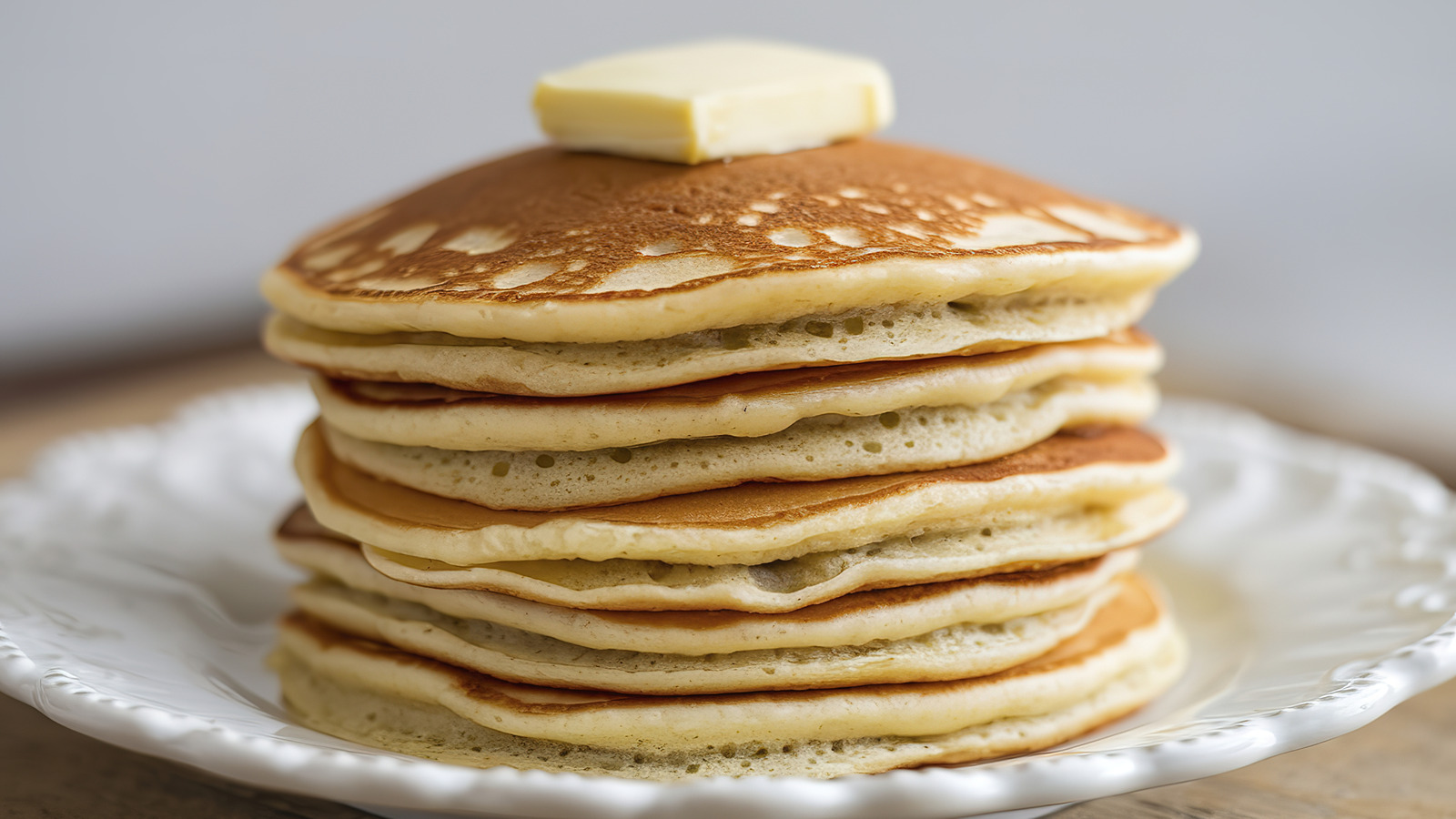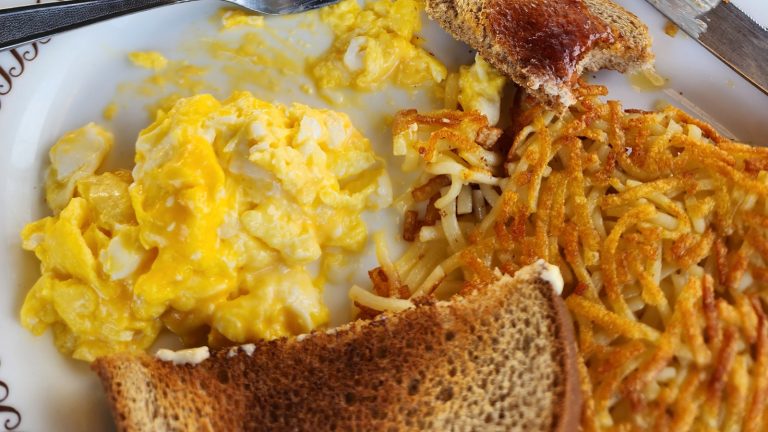Most people don’t think too hard about the type of butter used on pancakes and opt for the traditional kind. But, there’s an underrated type of butter with a bit of tang that can be used alongside or as a replacement for standard butter, and will perfectly accompany any buttermilk recipe (like this roasted berry and buttermilk pancakes recipe). We’re talking about cultured butter, and it is very similar in taste and look to what you’re used to. The only difference is that there are added bacterial cultures to the butter, which will ferment, just like buttermilk and yogurt. These added cultures provide a stronger flavor and help your pancakes stand out.
Cultured butter can be used as a topping that slides down the hot pancakes and can be spread over them to enhance flavor and depth. But you can also use cultured butter to grease the pan as you’re cooking the pancakes. Adding standard melted butter to pancake batter allows for the fat to create a fluffier pancake, and a more golden color on the outside, and you can also use cultured butter for this process as well.
Very sweet fillings/toppings, such as chocolate chips, can pair well with cultured butter because it will balance out the sweetness and create a perfect combination between sweetness and tang.
The benefits of cultured butter and how to make it
Cultured butter is essential for butter lovers. Anyone who sees butter as more than just an additive and genuinely enjoys its taste will appreciate the creamy, sometimes salty, flavor the bacterial cultures add. This is the more scientific reason as to why cultured butter pairs so well with buttermilk, and taste-wise, it further enhances the tanginess and will also be extra creamy. Similar to any other fermented product, the longer you leave the cultures in the cream to ferment before you churn it, the better the taste of the butter will be. So if you are planning to create your own cultured butter at home, it’s important to let your mixture of heavy whipping cream and cultured buttermilk sit for as long as possible (our guide to making cultured butter at home recommends 36 hours.)
Cultured butter will also work in savory recipes. Cultured butter can be a useful tool in searing meat such as a steak, because of its high smoke point. In addition to the taste, creaminess, and uniqueness that this butter can provide, the bacterial cultures present in cultured butter are a healthy component with probiotics to help stomach and gut health. The good benefits make cultured butter a no-brainer to use for your next pancake recipe.






